A Chinese exploration team that left Shanghai on November 12, 2007 has completed 37 scientific studies and ten logistic programs on its Antarctic expedition. The expedition marks the first time a Chinese team has employed robots in a study of the southernmost land on Earth.
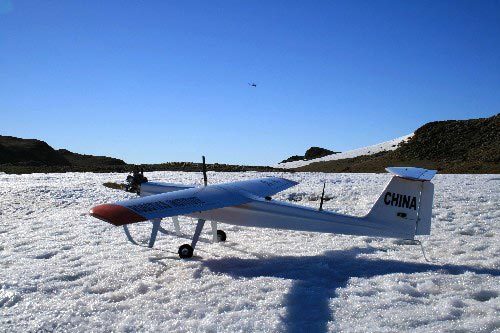
This photo, taken on December 26, 2007, shows the unmanned aircraft used in China's 24th expedition to Antarctica. [Photo: Xinhua]
The team used two robots on the expedition, the snow cat, which can move on ice and snow, and another robot capable of low-altitude flight.
The snow cat, which weighs 200 kilograms, can carry 40 kilograms of material and pull 100 kilograms of dead weight.
The unmanned aircraft, which weighs 20 kilograms, can carry five kilograms of material and fly at a speed of 90 to 110 kilometers per hour at an altitude as low as 150 meters.
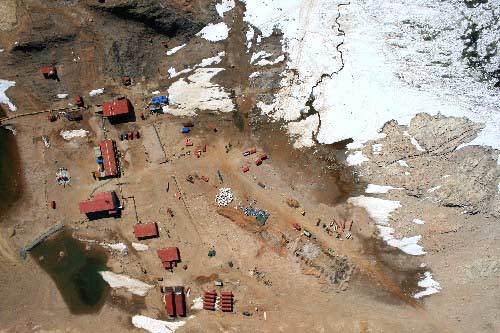
This photo taken from a height of 400 meters by the unmanned aircraft shows the Zhongshan Station, the second Chinese Antarctic base. [Photo: Xinhua]
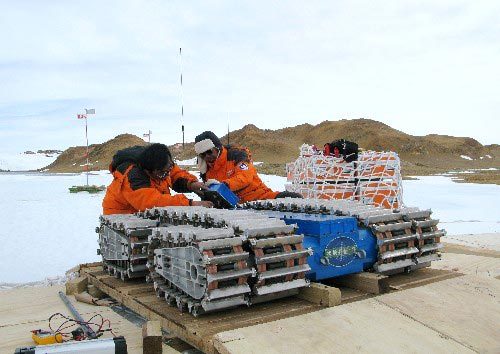
Chinese explorers Han Jianda (R) and Zhao Yiwen, both from Shenyang Institute of Automation of the Chinese Academy of Sciences (CAS), prepare for a test of the robotic snow cat. [Photo: Xinhua]

Chinese explorers establish an automatic astronomical observation station on top of the Antarctic inland ice sheet 4,093 meters above sea level on January 25, 2008. [Photo: Xinhua]
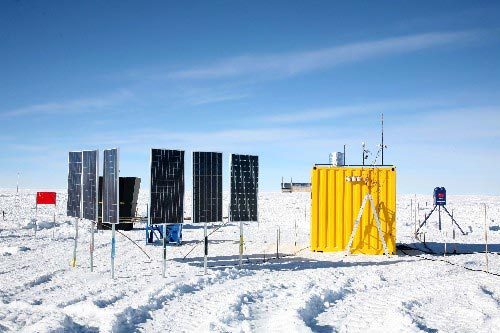
This photo, taken on January 27, 2008, shows the solar battery boards of the automatic astronomical observation station. [Photo: Xinhua]
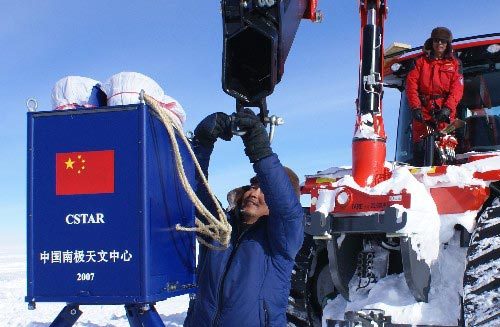
Chinese explorer Zhou Xu from the National Astronomical Observatories of China (NAOC) of the Chinese Academy of Sciences (CAS) works at the observation station. [Photo: Xinhua]
(CRI March 21, 2008)